After visiting Hassan II Mosque, we took a petit taxi to Rick’s Cafe, where we sat at a table on the second floor overlooking an enclosed courtyard. I ordered vegetable pokhara, saffron rice, raita, and eggplant compote. The meal consisted of piles of deep fried vegetables that I didn’t want to eat because they were too filling and fattening. I also had a glass of chilled white Moroccan wine that made me feel a bit loopy.
Ambiance oozed from every corner. The bar, lounge and restaurant, run by a former American diplomat, opened in 2004; it was designed to recreate the bar made famous in the classic 1942 movie Casablanca. Set in an old courtyard-style mansion built against the walls of the Old Medina of Casablanca, the restaurant/piano bar is filled with decorative details reminiscent of the film: curved arches, a sculpted bar, balconies, balustrades as well as beaded and stenciled brass lighting and plants that cast shadows on white walls. The famous song from the movie, “As Time Goes By,” is requested often of the in-house pianist on the 1930s Pleyel piano. Other songs on the repertoire include classic French, Spanish and Brazilian songs from the 1940s and 1950s, along with American favorites such as Summertime, The Lady is a Tramp, and Blue Moon.

Rick’s Cafe
After lunch we walked through the Ancienne Médina looking at the merchandise, while stray cats sulked about everywhere. It lacks the medieval character of other medinas, selling mostly plastic dry goods and tacky clothes. We stopped into La Sqala, the restaurant where we ate the night before, for a few daylight pictures. Then we made our way through the labyrinthine streets to the shops lining the outer wall, and then to the Café de France where we enjoyed more cappuccinos and people watching.

walking from Rick’s Cafe to the Ancienne Médina

La Sqala

La Sqala
Casablanca is definitely not a tourist town, so after Hassan II Mosque and Rick’s Cafe, we wondered how we’d fill the rest of the day. We decided to try a walking tour outlined in my old Lonely Planet Morocco book: “Central Casablanca,” which led us through neighborhoods built in the Mauresque style of 1912-1924. The style blended aspects of traditional Moroccan design such as Islamic arches, columns, scrollwork, and tilework with more liberal influences of early 20th-century Europe. By the 1930s, Mauresque architecture began to reflect the Parisian art-deco style, characterized by ornate wrought iron balconies, staircases, windows, carved façades and friezes, and rounded exterior corners. Some were restored and in good condition, but many were dilapidated.
The architect Henri Prost ((1874-1959) designed Casablanca from the air. The city is considered the pinnacle of French colonial achievement.

mosque in Central Casablanca

derelict Central Casablanca

laundry

Agence Urbaine de Casablanca
Following the tour, we walked up a majestic tree-lined promenade, dropping into the Parc de la Ligue Arabe, or Park of the Arab League, designed in 1918. Here, we found a modern day skate park with young men on skateboards surfing into giant concrete holes and sailing into the air. Everywhere was the sound of metal rolling on wood and concrete.
The streets around this expansive park were dotted with art deco designs from the French protectorate era, as well as some modern buildings.

palm lined boulevard
We spotted the Maruesque Cathédrale du Sacré Coeur, with elements of neo-Gothic, from 1930. The Roman Catholic church was deconsecrated in 1956; inside it is now a cultural center and apparently quite dilapidated, with pigeons living in the towering art deco columns.

Cathédrale du Sacré Coeur

palm lined boulevard

skate park at Parc de la Ligue Arabe
We followed the palm trees toward the wilaya, or old police headquarters, now the governor’s office, dating from 1930. It’s topped with a modernist clock tower.

wilaya
At the Palais de Justice (law courts), built in 1925, pigeons slapped their wings against the air, cooed, warbled, and strutted, jutting out their iridescent necks. Pecking at seeds, fruits, plants, and crumbs, they seemed to have taken over the fountain. Moroccan families congregated in the grand square, Place Mohammed V.
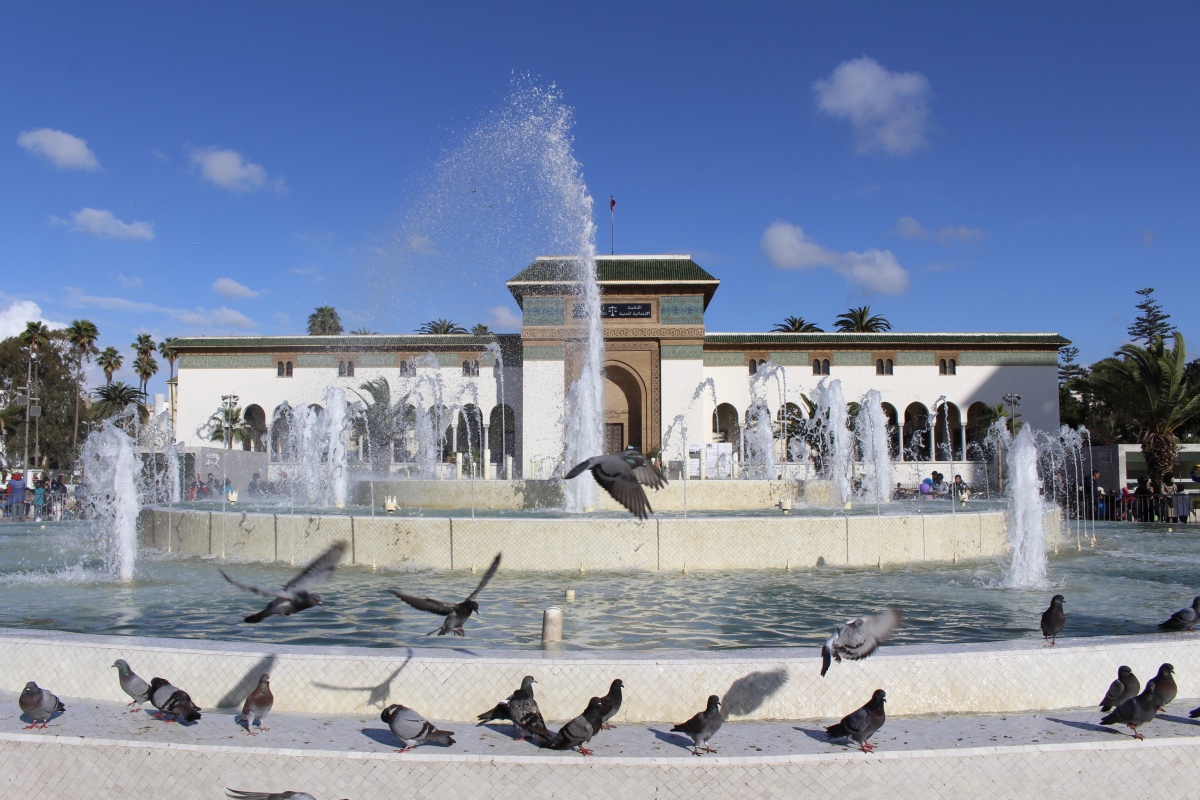
palais de justice

Central Casablanca
We passed the main post office with its arches and stone columns.

Casablanca’s Main Post Office
La Princière Salon de Thé has a huge stone crown at its roofline.

La Princière Salon de Thé
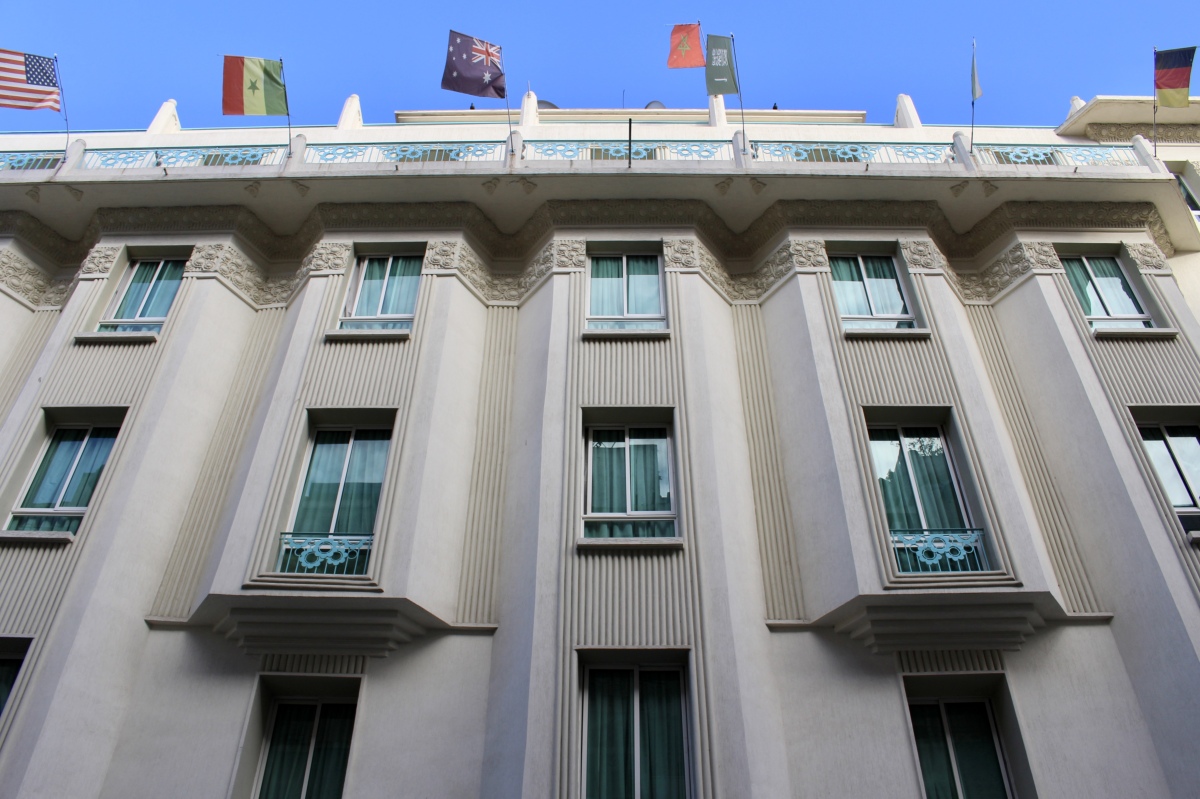
La Princière Salon de Thé
The Hôtel Guynemer has restored art deco paneling.

Hôtel Guynemer
The 1922 Hôtel Transatlantique was beautifully restored and is brightened by lines of colorful flags.
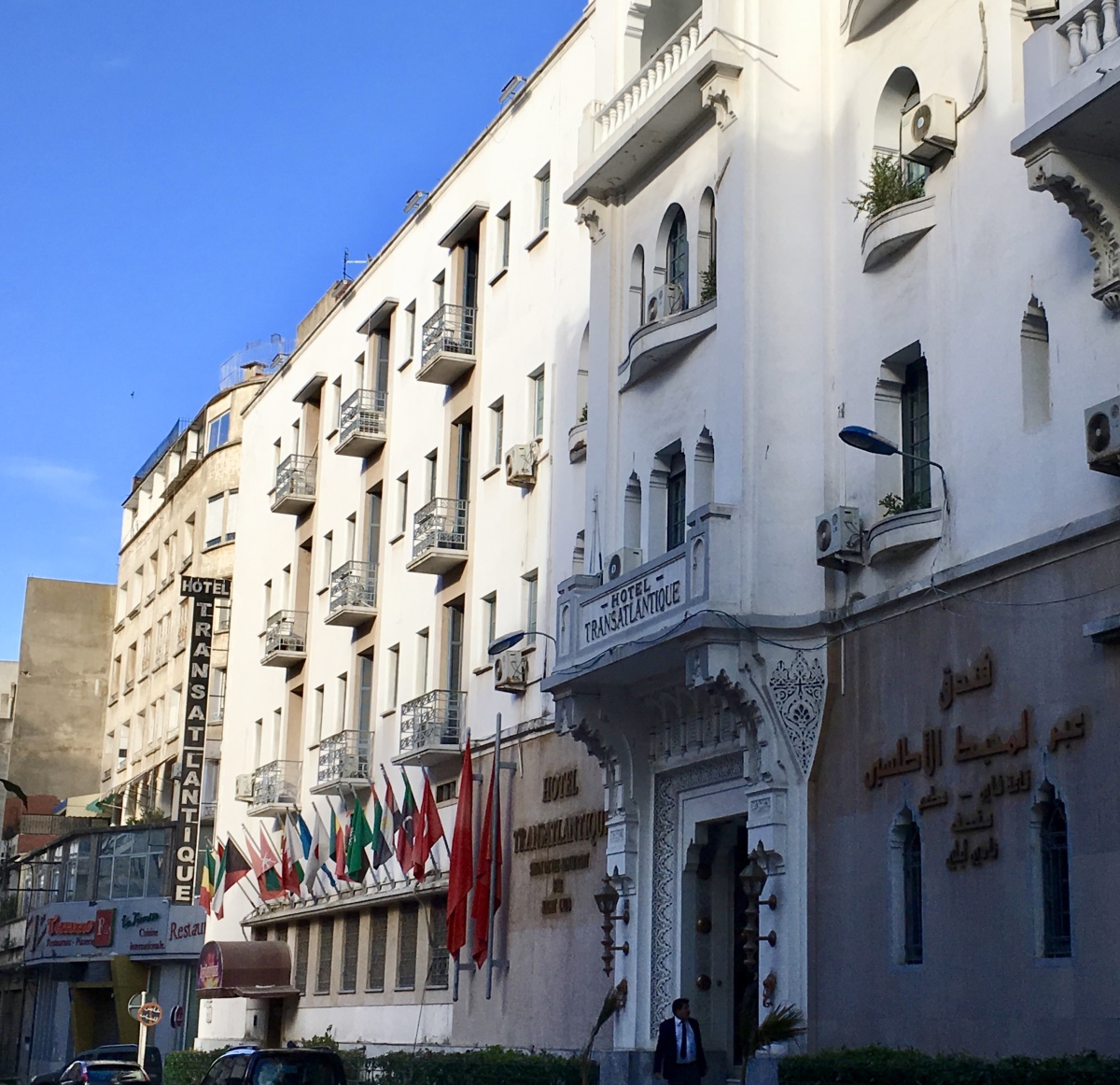
Hôtel Transatlantique

Hôtel Transatlantique
The Hôtel Volubilis also has a great façade.

Hôtel Volubilis
We passed the derelict shell of the Hôtel Lincoln, now in ruins and covered in scaffolding, but I wasn’t able to get a photo.
We walked past the Central Market Post Office with its delicate carved motifs.
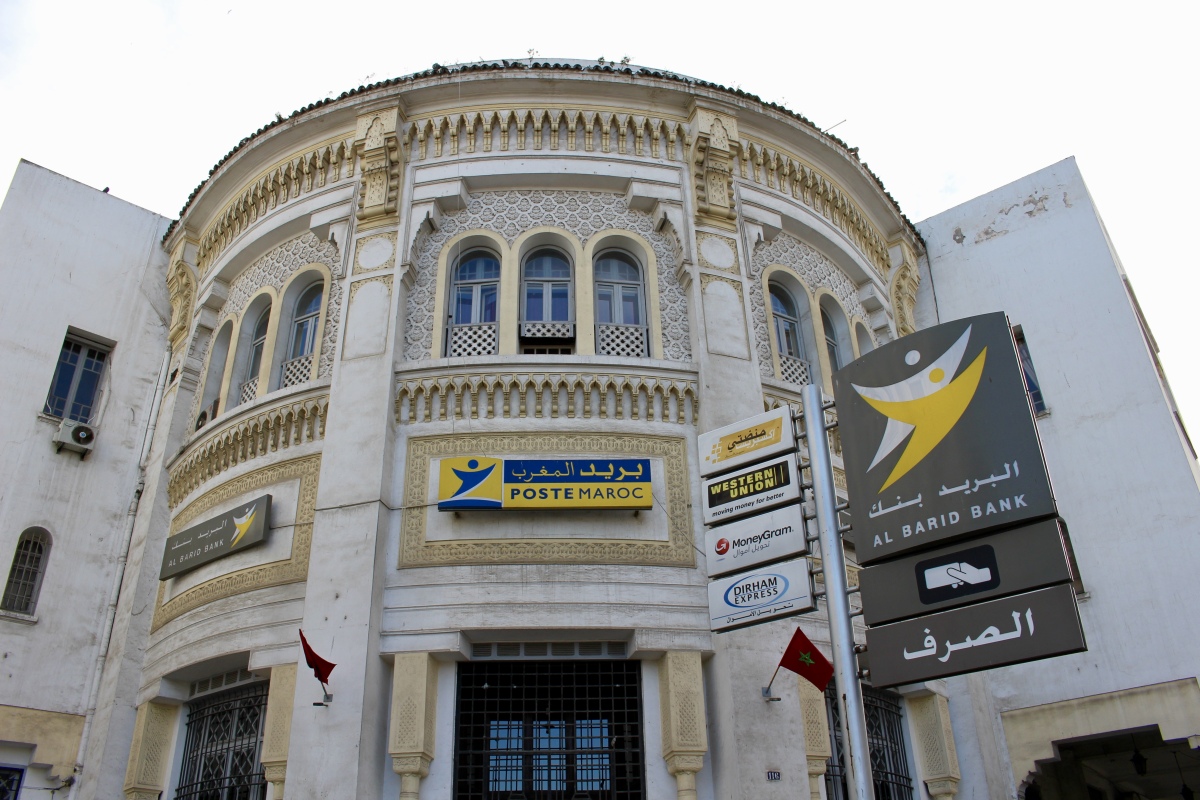
Central Market Post Office
We admired the intricately decorated façade of the Le Matin/Maroc Soir building.
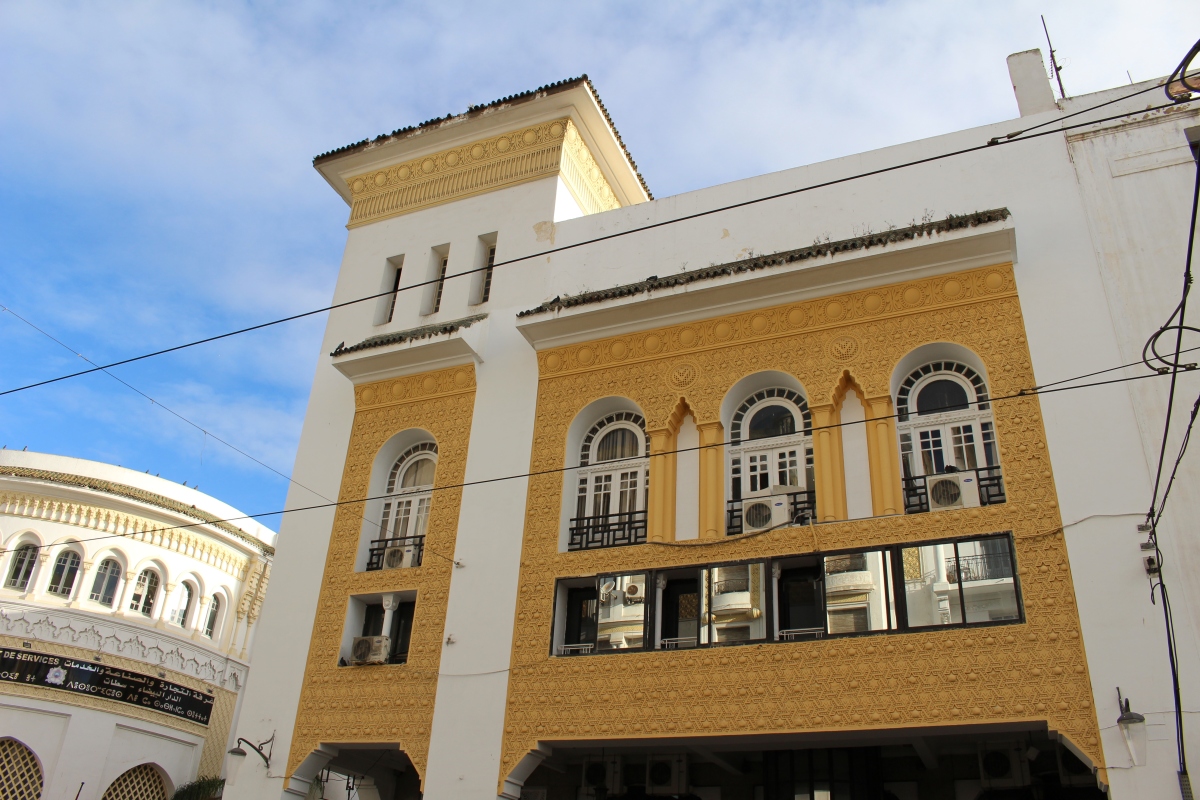
Le Matin/Maroc Soir
The Petit Poucet bar was once frequented by Antoine de Saint-Exupéry, author of The Little Prince, Edith Piaf, and Albert Camus.
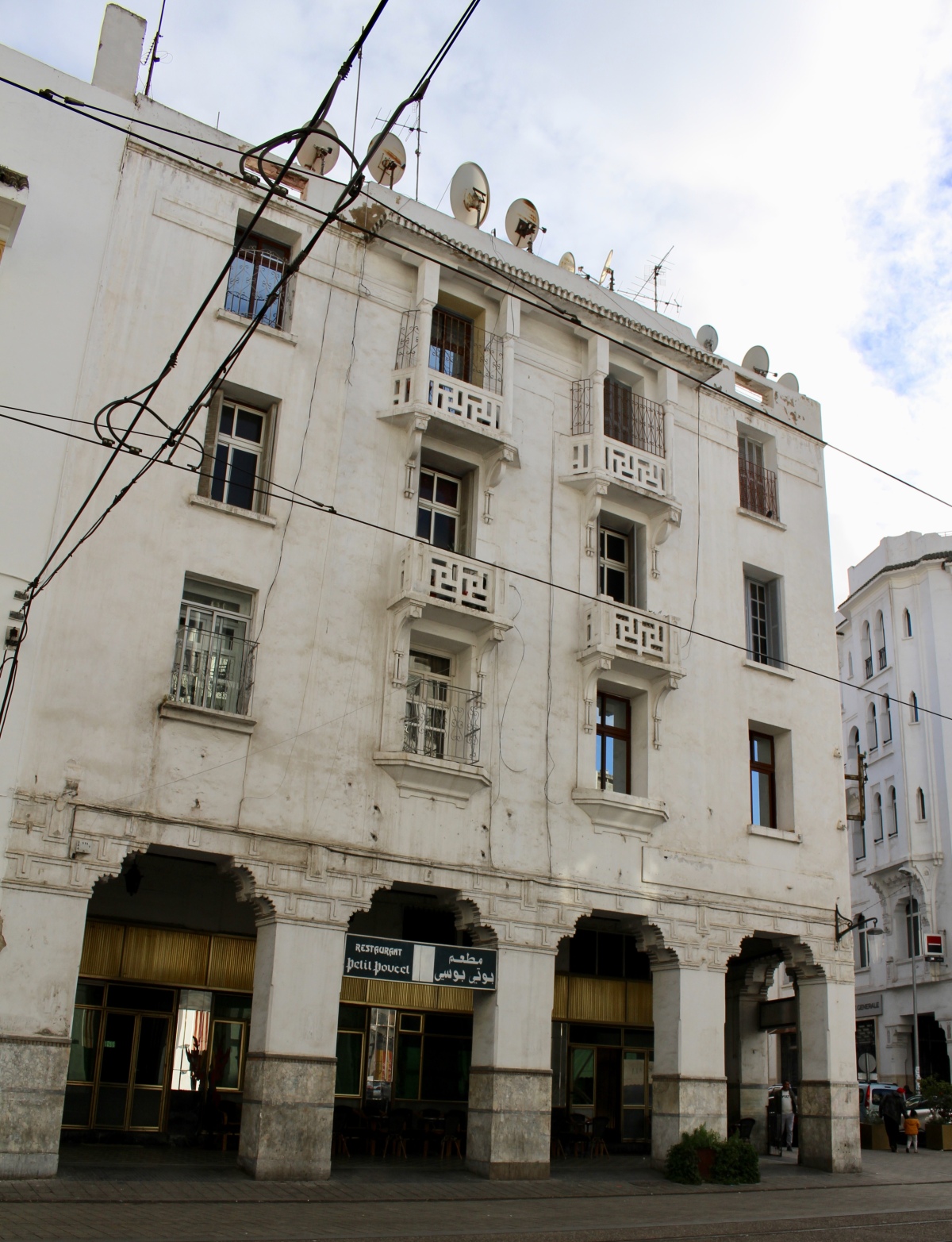
Petit Poucet bar
Cinéma Rialto is a classic renovated art deco building. It usually has two showings of the movie on offer, one in the afternoon and one in the evening, usually in French or Arabic with French subtitles.

Cinéma Rialto
At Place 16 Novembre is an array of art deco buildings.

Central Casablanca

Central Casablanca
After returning to our Airbnb for a rest, we went out for dinner to Le Cuisto Traditionnel, an upscale restaurant where I enjoyed shrimp pil-pil, with plenty of oil and garlic flavoring. We shared Susan’s huge pyramid-shaped vegetable couscous. Aziz, the owner, served us graciously in his golden pointed slippers and bright stockings under his djellaba. We had to do without alcohol as none was served.
Three American women at a nearby table talked loudly the whole time about money. “It cost $265/day in Tokyo. Well, it cost $120 in Turkey.” Figuring out their bill seemed an ordeal as the restaurant’s credit card machine wasn’t working, so they had to pay in U.S. dollars after converting the bill from dirhams to dollars. They discussed the proper payment endlessly in strident voices.
We had Jouhara for dessert – crispy triangular pancakes topped with yogurt and honey. Then we walked back to our Airbnb to rest up for our next free day in Casablanca before our tour would start Monday evening. We wondered what on earth we’d do to fill the next day.
*Saturday, April 6, 2019*
*22,132 steps, or 9.38 miles* (total) (including casablanca, morocco: settling in & a walk to hassan ii mosque)
**************
On Sundays, I post about hikes or walks that I have taken in my travels; I may also post on other unrelated subjects. I will use these posts to participate in Jo’s Monday Walks or any other challenges that catch my fancy.
This post is in response to Jo’s Monday Walk: Christmas in Tavira.



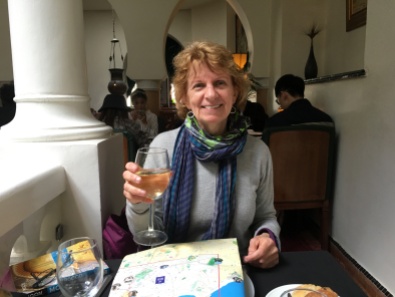


Thank you for my Virtual stroll around Casablanca, Cathy….a place I shall never get to see in person
LikeLike
Thank you, Sue. Don’t worry, Casablanca is definitely not meant for tourists and can be quite disappointing if you go looking for tourist destinations. Other parts of Morocco are much more interesting. 🙂
LikeLike
Ah, yes, but I don’t consider myself a tourist, Cathy!
LikeLike
Ah, yes, neither do I really!
LikeLiked by 1 person
Teehee!
LikeLiked by 1 person
Clearly, the pigeons and the cats need more entertainment. And, you know, you, too. I’m glad Rick’s was fun. I find it ironic that there should be such a Deco influence in Casablanca, when Deco itself was influenced by the art style of Egypt to the east. Anyway, I appreciate learning all I have learned from what you’ve shared. I hope more time in Casablanca might prove interesting, somehow.
LikeLike
It’s so interesting about all these architectural connections, Christopher, like the connection of Art Deco to Egypt. As for Casablanca, usually I find anyplace interesting, even though Casablanca really wasn’t that intriguing. Next summer I hope to live like a local in Ecuador for a month, without necessarily spending all my time visiting tourist spots, but just wandering through neighborhoods and writing and studying Spanish. I hope that will be more of an experience like I had in Korea, Oman, China and Japan, where I lived and worked in the country. It’s such a different experience than just traveling. 🙂
LikeLiked by 1 person
I wondered where you’d take me this week, Cathy… famous Rick’s 🙂 🙂 Thank you so much for your constant support. I always mean to follow more of your invitations but I can never seem to find as many hours in a day as you do 🙂 Wishing you joy in your life, hon, and a better year ahead.
LikeLike
Thanks so much, Jo. I hope the coming year will be a good one; things seem to be good right now but the one thing we know in life is that everything changes! I wish you a joyous year too!
LikeLike
🤗🥂💕
LikeLiked by 1 person
[…] Rick’s Café & a walking tour of Central Casablanca […]
LikeLike
ooh sounds like my sort of place – somewhere just to wander and soak up the ambience!
LikeLike
You sure did better than me. We only stayed in Casablanca for a few hours, I hated it instantly. I do recall a guy who we met in a bar where we’d stopped for coffee, offering us a room in his house along the coast. We thought that a little odd (this is when I was with the two eldest children) but now I am wondering if it was Essaouira – in which case, damn!
LikeLike
I wonder if it was Essaouira, Jude. In any case, I don’t know how I’d feel accepting an offer of a room from a Moroccan man! It does seem odd. I can’t say I hated Casablanca, I just didn’t find it all that interesting. I has such an exotic sound to it, so its name is more promising than its reality. 🙂
LikeLiked by 1 person
Ah, no, he wasn’t Moroccan, if memory serves me right he was a middle-aged American chap. I regret not going now, but my partner and I were exhausted after that train journey from Algiers and a little suspicious of his motives. I thought the name Casablanca sounded romantic too. It’s not. I won’t be going back there!
LikeLike
I spent too much time in Casablanca already, so I won’t be going back either. Actually, I doubt I’ll ever return to Morocco. Once was enough. 🙂
LikeLiked by 1 person